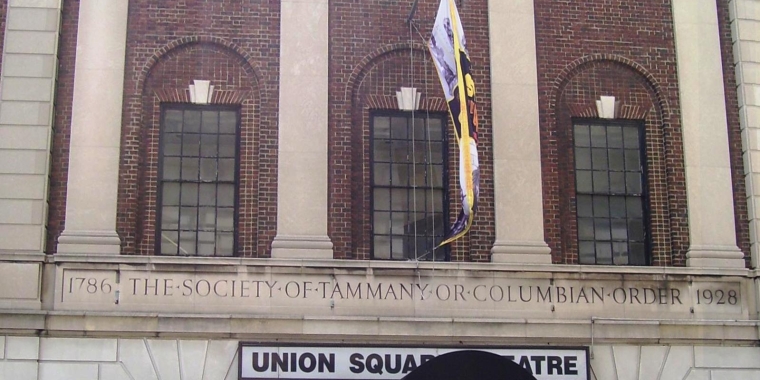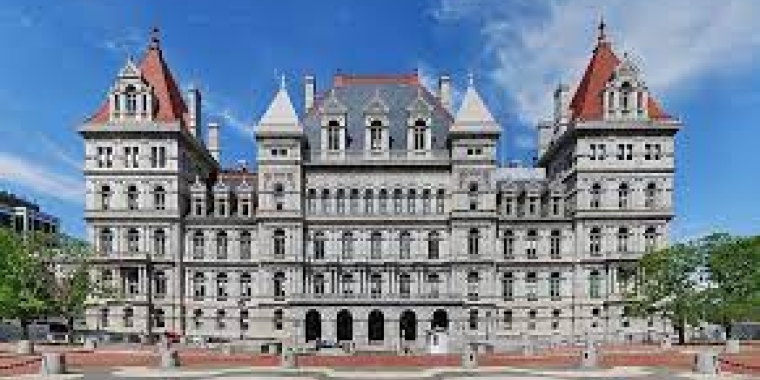
Sen. Krueger's Testimony in Support of Landmarking the Former Tammany Hall
Liz Krueger
July 1, 2013

Sen. Krueger submitted the following testimony to the NYC Landmarks Preservation Commission for its June 25 public hearing on landmarking the former Tammany Hall building on Union Square East.
It is a pleasure to be able to represent Union Square as its new senator. The square itself is one of the East Side’s treasures, and the surrounding neighborhood is home to many remarkable and cherished structures and institutions that add immensely to our city’s heritage.
I thank the Commission for calendaring the former Tammany Hall site for consideration today, and firmly believe it is such a building. I offer the following testimony in support of its designation as a landmark. The former Tammany Hall building holds a wealth of architectural, historic, and political significance for our city, and richly deserves both recognition and protection as an official, designated landmark.
Tammany Hall, at 100-102 East 17th Street on Union Square East, was designed by Thompson, Holmes & Converse and Charles B. Meyers. A Colonial Revival structure, it is build of red brick with limestone trim, and is both imposing and aesthetically pleasing. It was reportedly modeled after the original Federal Hall, where George Washington was inaugurated as our nation’s first president under the Federal Constitution and where the Bill of Rights was passed by Congress. Real Estate Record describes the design as “a dignified architectural treatment, one of the chief motifs of which are the severe Colonial columns in the centers of the Union Square and Seventeenth-street facades which recall the days of early American architecture.”
Tammany Hall’s historical legacy is well known. Once the headquarters of New York City’s Democratic Party political machine, Tammany Hall’s place in the history of our city cannot be overstated. After the Democratic Party vacated the building and sold it to the International Ladies’ Garment Workers’ Union (significant itself, as one of the first major American labor unions to have a primarily female membership) it served as a meeting space for union activities. This history gives the building a strong sense of place at its site neighboring Union Square, which is considered a birthplace of the American labor movement and has been the site of countless labor protests and Labor Day celebrations. In recent years, the building’s auditorium has housed one of the most successful off-Broadway dramatic venues, the Union Square Theatre, and the building is now home to the New York Film Academy.
Tammany Hall’s architectural significance is rivaled and perhaps even surpassed by its specific political importance in the history of our city. Founded in 1789 as the Tammany Society, the political machine headquartered at Tammany Hall grew to play a major and at times dominant role in the political life of New York City. The Tammany Society was named for Tamanend, a leader of the Lenape Native American people, borrowing from New York’s rich Native American history. The Tammany Democratic machine grew particularly instrumental in helping new immigrants rise up in American politics from the 1790s through the 1960s, and in 1928 New York Governor Al Smith, a Tammany hero, became the first Roman Catholic to win a major party presidential nomination, a key milestone for the predominantly Catholic immigrant populations that had grown throughout the late 19th and early 20th centuries.
I have been joined in calling for this designation by a unanimous Community Board 5, colleagues who represent Union Square in City Hall and the state Legislature, the Municipal Art Society, the Historic Districts Council, and the Union Square Community Coalition. We must not lose this historically and architecturally invaluable building. Allowing it to go unprotected risks losing a vital piece of our city’s heritage, and would do a disservice to New York’s record of safeguarding its architectural past.
Share this Article or Press Release
Newsroom
Go to Newsroom

Guide to Utility Rights and Assistance - Winter 2022
October 1, 2022
Senator Krueger's Albany Update - September 2022
September 27, 2022
